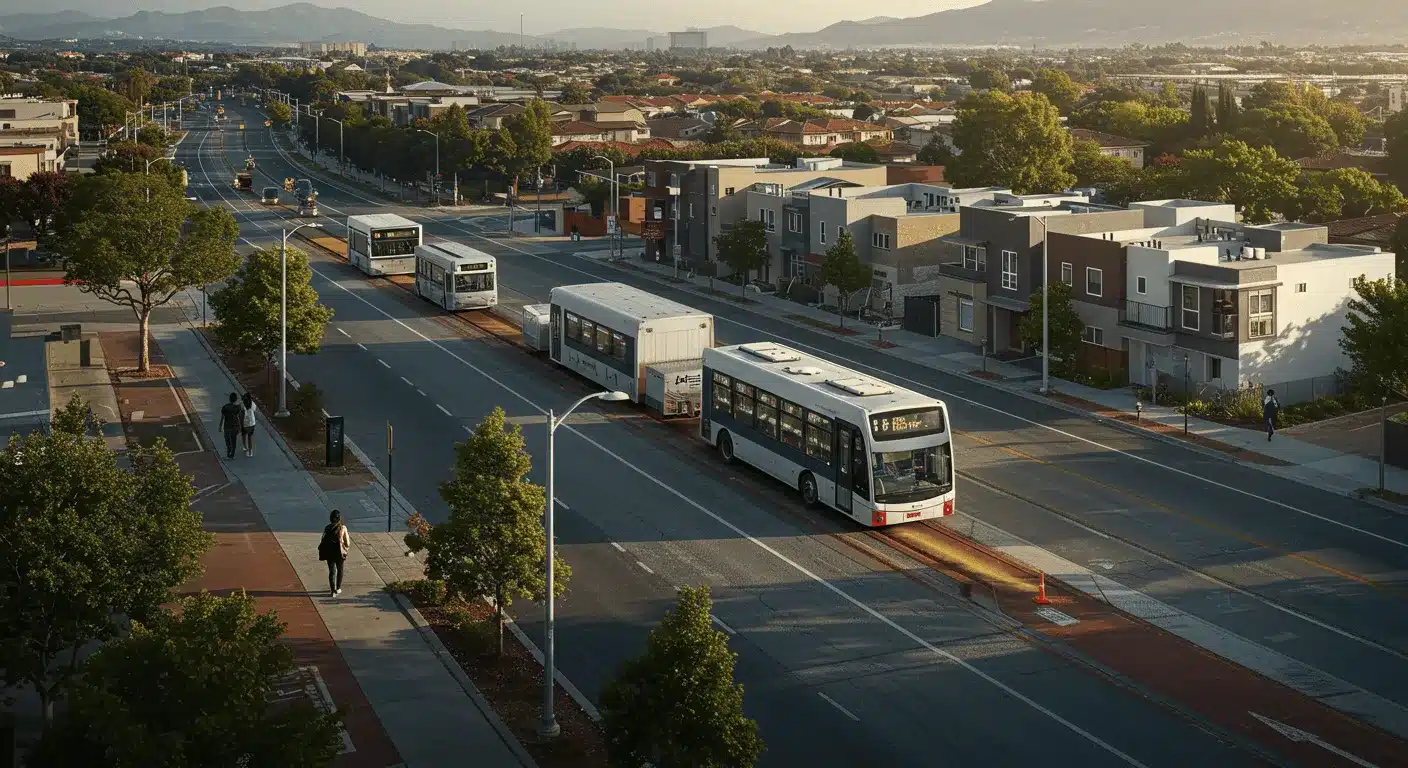
This post was last modified on October 2, 2025.
As you explore the evolving environment of real estate, consider how SB 375 influences buyer preferences for homes near transit hubs. This legislation not only promotes sustainable living but also highlights the financial benefits of reduced transportation costs. However, understanding the complexities of market demand, regulatory challenges, and the risk of gentrification will be important. What strategies can you employ to navigate these changes and capitalize on this growing interest?
The Impact of SB 375 on Housing Development
As California faces pressing environmental challenges, SB 375 has surfaced as key legislation shaping housing development near transit hubs. This law mandates Metropolitan Planning Organizations (MPOs) to create Sustainable Communities Strategies (SCS) that integrate transportation and housing to cut vehicle miles traveled (VMT) and greenhouse gas (GHG) emissions.
By aligning Regional Housing Needs Assessments (RHNA) with SCS compliance, the state encourages housing development in transit-accessible areas, fostering denser, transit-oriented development (TOD).
While incentives exist for affordable housing projects, high development costs and local opposition can hinder progress.
The law’s success relies on balancing environmental goals with housing affordability, ensuring that actual housing production aligns with the intended objectives, ultimately supporting sustainable living and reducing car dependency in urban centers. Additionally, the high demand for housing in California further complicates the implementation of these strategies as it drives up competition and prices in desirable locations.
Benefits of Transit-Oriented Living for Buyers
Transit-oriented development (TOD) offers considerable advantages for buyers, particularly in vibrant urban environments shaped by legislation like SB 375.
Living near transit hubs can greatly alleviate affordability issues, with households saving an average of $3,000 annually on transportation costs. Increased mobility enhances access to key services, making life easier for families and individuals reliant on public transit.
Additionally, TOD fosters community engagement by creating walkable neighborhoods that encourage social interaction. These areas not only support mixed-use development but also enhance property values and economic vitality. Furthermore, the California real estate market is characterized by high demand and limited supply, making TOD properties increasingly desirable.
Challenges and Opportunities in the Market
While the push for transit-oriented development (TOD) presents exciting prospects for both buyers and developers, it also brings a host of challenges that can complicate the market environment. Here are some key points to reflect on:
- Regulatory hurdles can slow down project approvals, affecting market interactions.
- Inconsistent application of environmental reviews may delay transit-oriented projects.
- Gentrification risks near transit hubs can alter buyer perceptions and affordability.
- Increased demand may drive up prices, limiting access for lower-income buyers.
- Uncertainty about the long-term benefits of TOD can lead to cautious buyer interest.
- Rent control laws may further complicate the housing market dynamics, impacting rental income and maintenance for properties near transit hubs.
Navigating these challenges requires a significant understanding of the evolving market interactions and a commitment to addressing buyer perceptions to foster sustainable growth in transit-adjacent housing.
Frequently Asked Questions
How Does SB 375 Affect Property Values Near Transit Hubs?
SB 375 boosts property appreciation near transit hubs by enhancing market demand. As streamlined development and improved transit access attract buyers, property values rise, creating opportunities and challenges for existing residents and local governments.
What Incentives Exist for Developers Under SB 375?
Under SB 375, developers gain incentives for sustainable development, including CEQA streamlining and reduced review requirements. These benefits accelerate project approvals and lower costs, promoting transit-oriented development that aligns with regional housing and environmental goals.
Are There Specific Zoning Laws Tied to SB 375?
Yes, specific zoning regulations under SB 375 promote transit development by requiring increased densities and mixed uses near transit hubs, aligning with Sustainable Communities Strategy goals to support regional housing needs and reduce greenhouse gas emissions.
How Can Buyers Find Transit-Oriented Properties?
To find transit-oriented properties, explore transit maps for major nodes and corridors, then filter property listings by proximity to transit stations. Analyze local plans to uncover neighborhoods with planned developments and revitalization efforts.
What Role Do Community Organizations Play in SB 375 Initiatives?
Community organizations drive SB 375 initiatives through advocacy efforts and community engagement, informing decision-makers on local needs, ensuring equitable development, and enhancing public participation. Their data collection shapes sustainable housing and transportation planning for all residents.



